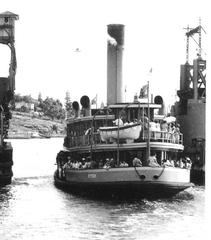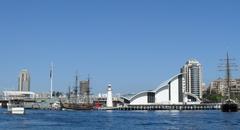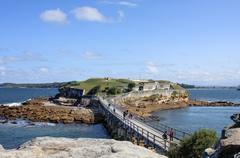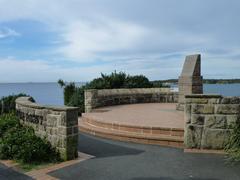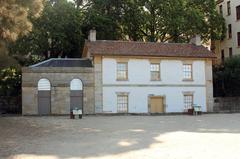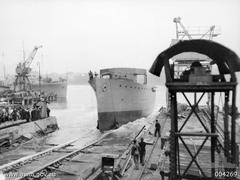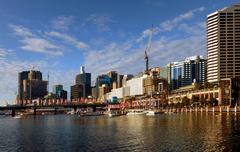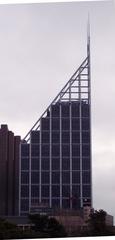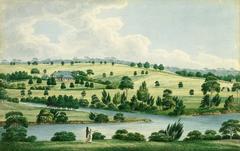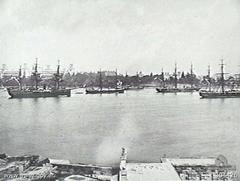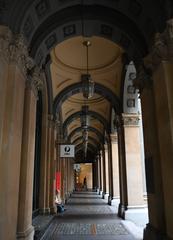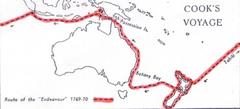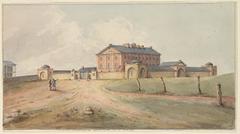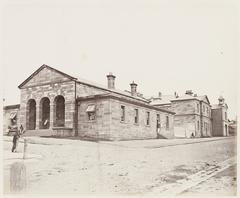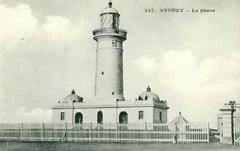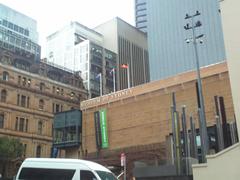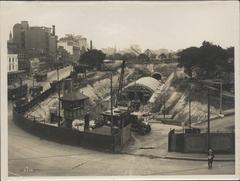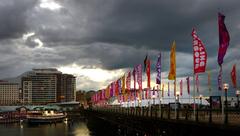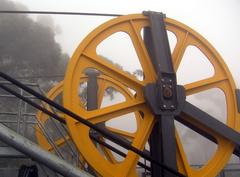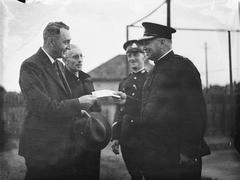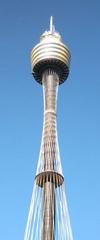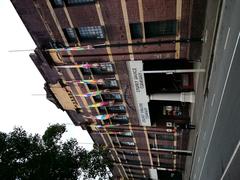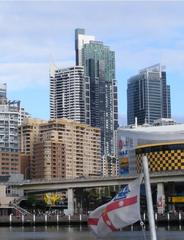
Visiting Gladesville Bridge: Hours, Tickets, and Historical Insights
Date: 31/07/2024
Introduction
The Gladesville Bridge, an iconic structure in Sydney, Australia, is more than just a functional piece of infrastructure. Opened on October 2, 1964, this engineering marvel spans the Parramatta River, connecting the suburbs of Gladesville and Drummoyne. Known for its innovative design and construction techniques, the bridge was the longest concrete arch span in the world upon its completion, measuring 305 meters (1,000 feet). This record stood until 1980, highlighting the bridge’s significance in the annals of civil engineering (Bitesize Traveller). The bridge’s construction marked a pivotal moment in Sydney’s infrastructure development, facilitating greater connectivity and economic integration between the northern and southern suburbs (Wikipedia).
The Gladesville Bridge is not just an engineering feat; it is a cultural landmark that has played a significant role in the social and economic fabric of Sydney. Its sleek, modernist design, characterized by slender piers and the extensive use of pre-stressed concrete, reflects the architectural trends of the 1960s and has made it a subject of study and admiration worldwide (Transport NSW). This guide delves into the rich history, architectural significance, and practical visitor information of the Gladesville Bridge, providing a comprehensive understanding of why this structure remains a must-visit landmark in Sydney.
Table of Contents
- Explore the Gladesville Bridge: History, Visitor Information & Stunning Views
- Early Settlement and Initial Bridge Construction
- The 1881 Bridge
- Planning and Construction of the Modern Bridge
- Design and Engineering Innovations
- Modifications and Current Use
- Heritage and Significance
- Visitor Information
- Visitor Experience
- Special Events and Guided Tours
- Frequently Asked Questions (FAQ)
- Conclusion
Explore the Gladesville Bridge: History, Visitor Information & Stunning Views
Early Settlement and Initial Bridge Construction
The area surrounding the Gladesville Bridge, including Gladesville and Drummoyne, was first settled by Europeans soon after the establishment of Sydney Cove. In the 1790s, Crown grants of 12-hectare (30-acre) lots were distributed to encourage agricultural development. The region remained largely rural until the 1850s when these grants were subdivided into large urban plots for the construction of ‘gentlemen’s residences’ for the wealthier colonists of New South Wales (Wikipedia).
To improve access to Sydney, a wharf was constructed on the Parramatta River at Gladesville, and a two-lane steel lattice truss girder bridge with a swing span was built across the river between Drummoyne and Huntleys Point. This original bridge, known as the Gladesville Bridge or Parramatta River Bridge, was opened on 1 February 1881. It was part of a series of bridges built during the 1880s, which included the Fig Tree Bridge and the Iron Cove Bridge (Wikipedia).
The 1881 Bridge
The 1881 Gladesville Bridge was a significant engineering feat of its time. It carried a tramline and road traffic but did not accommodate pedestrians. The bridge featured a swing section on the southern end that could be opened to allow sailing ships and steamers with high funnels to pass. This was particularly important for ‘Sixty miler’ colliers from Newcastle, which required the bridge to be opened to access the Australian Gas Light Company (AGL) gasworks site at Mortlake (Wikipedia).
The bridge stood on iron cylinders with a sandstone pier at each end. Today, the sandstone piers are all that remain of the original bridge, with the northern pier adjacent to the Huntleys Point ferry wharf and the southern in Howley Park in Drummoyne (Wikipedia).
Planning and Construction of the Modern Bridge
By the 1950s, the increase in traffic had made the original bridge very congested, necessitating a replacement. The new Gladesville Bridge was designed by Anthony Gee, G. Maunsell & Partners, and Eugène Freyssinet. Construction began in December 1959 and took nearly five years to complete. The bridge was built by Reed & Mallik (Engineers, England) and Stuart Bros (Builders, Sydney) (Wikipedia).
The new bridge was part of a larger program of road works intended to link Sydney with the northern suburbs and through to Newcastle. Although the strategic project was abandoned in the 1970s, the Gladesville Bridge remains a testament to the engineering prowess of its time (Transport NSW).
Design and Engineering Innovations
When it opened on 2 October 1964, the Gladesville Bridge was the longest span concrete bridge in the world, measuring 305 meters (1,000 feet). It held this title until 1980 when it was surpassed by Croatia’s 416-meter span Krk Bridge (Bitesize Traveller). The bridge’s design featured innovative construction methods and the jacking process, setting new standards for bridge design and construction. It marked the transition from steel bridge technology, exemplified by the Sydney Harbour Bridge, to concrete design, confirming the arrival of pre-stressed concrete as a major bridge-building material in Australia (Transport NSW).
Modifications and Current Use
In the 1970s, the roadway of the Gladesville Bridge was widened from six to seven lanes to accommodate increased traffic flow. This widening was achieved without structural modification by taking in some of the generous width of the pedestrian walkways on either side of the roadway (Wikipedia). The bridge now has three northbound lanes and four southbound lanes, separated by a concrete median.
The Gladesville Bridge remains in active operation, serving heavy inner-city road traffic on a daily basis. It is in good physical condition due to regular maintenance works (Wikipedia).
Heritage and Significance
The Gladesville Bridge was added to the New South Wales State Heritage Register on 1 October 2014, marking its 50th anniversary. It was also named an Engineering Heritage International Marker and an International Historic Civil Engineering Landmark (Wikipedia). These recognitions underscore its enduring significance in Sydney’s infrastructure and its role as a landmark engineering achievement.
Visitor Information
Visiting Hours and Accessibility
The Gladesville Bridge is accessible 24/7 for both pedestrians and vehicles. There are no ticket prices or fees required to cross the bridge. It is easily accessible by public transport, with the Huntleys Point ferry wharf nearby and several bus routes serving the area.
Best Times to Visit
The best times to walk over the Gladesville Bridge are early in the morning to catch the sunrise or in the evening to watch the sunset. Special events like New Year’s Eve or the Vivid light show offer additional opportunities to enjoy the bridge’s views (Bitesize Traveller).
Nearby Attractions
Visitors can explore nearby attractions such as Howley Park in Drummoyne, which offers beautiful picnic spots and waterfront views. The Sydney Opera House and Sydney Harbour Bridge are also visible from the Gladesville Bridge, providing excellent photo opportunities.
Visitor Experience
Today, the Gladesville Bridge is not only a vital crossing for road traffic but also a popular route for walkers, runners, and cyclists. Pedestrian and bicycle access is available on both sides of the bridge, with the side closest to the Sydney Opera House offering wider footpaths and iconic views of Sydney Harbour and the Sydney Harbour Bridge (Bitesize Traveller). It takes approximately 10 minutes to walk across the bridge from Drummoyne to Huntleys Point, and visitors are encouraged to stop at the top for panoramic views of the harbour and to read the plaque about its construction.
Special Events and Guided Tours
While there are no official guided tours specifically for the Gladesville Bridge, visitors can join broader Sydney walking tours that include the bridge as part of their itinerary. Check local tour operators for more information.
Frequently Asked Questions (FAQ)
Can you walk over the Gladesville Bridge?
Yes, pedestrian access is available on both sides of the bridge.
What are the best times to visit the Gladesville Bridge?
Early mornings and evenings are ideal for capturing beautiful sunrise and sunset views.
Are there guided tours available?
While there are no specific guided tours for the bridge, it is often included in broader Sydney walking tours.
Conclusion
The Gladesville Bridge stands as a testament to the skill and commitment of all those involved in its construction. Its innovative design and engineering have left a lasting legacy, making it a significant landmark in Sydney’s architectural and infrastructural history. Visitors to the bridge can appreciate not only its historical importance but also the stunning views it offers of Sydney’s iconic skyline and waterways.
For more information, check out the official website or follow us on social media for updates.


